
1 2


1 2
06. Te Mana Ola—The Pacific Health Strategy
06. Election 2023: Pasifika Decisions
07. Maui’s Resilience Shines Through Amidst 2023 Bushfires
08. Aaradhna Domestic Violence Experience
09. Toa Samoa's Rugby League World Cup 2022 Journey: A Tale of Mana and Determination
10. Hot Takes in the Hub
4
14. The Real Island Way!—Porita Fruean
18. Aelan Lines—Jasmine Navala Waleafea
22. For My Grandfather’s Stories—Grace Fakahau
25. This identity. My identity. What’s an Identity Again?
—Tarifa Laban
26. Nurturing Pasifika Heritage: Sustainable Agriculture, Food Security, and Culture—Upu S Lefauaitu
27. Eat me and be nourished—Mauatua Fa’ara-Reynolds
5
28. Top 10 | Personal Opinion on Island Music
—Rebecca Soloi and Vaetoeifaga Apelu
29. PASI BANGERZ—Viliami Folau

30. Pasifika Podcasting—Jolénna Deo
12. I Know That You Know That We Know —Vaetoeifaga Apelu
13. Pasifika Creatives in Business—Wesley Potogi
6
32. Unearthing Pacific Literature: Talemaot Solomon Stories of Peace and Conflict
—Jasmine Navala Waleafea
34. We Leave Our Islands—Porita Fruean
7
About Us
Salient is published by, but remains editorially independent from, the Victoria University of Wellington Students’ Association (VUWSA). Salient is funded in part by VUWSA through the Student Services Levy. Salient is a member of the Aotearoa Student Press Association (ASPA).
The views expressed in Salient do not necessarily reflect those of the Editors, VUWSA, or the University.
Complaints
Complaints regarding the material published in Salient should first be brought to the Editors in writing (editor@salient.org.nz).
If not satisfied with the response, complaints should be directed to the Media Council (info@mediacouncil.org.nz).
Letters
Got opinions about what we publish? Send it to letters@salient.org.nz and we'll publish it.
Find Us
Twitter: @salientmagazine
Facebook: fb.com/salientmagazine

Instagram: @salientgram
www.salient.org.nz
Salient Podcasts
Instagram: @salient_podcasts
Catch us on:

The Unedited Session Salient Podcasts
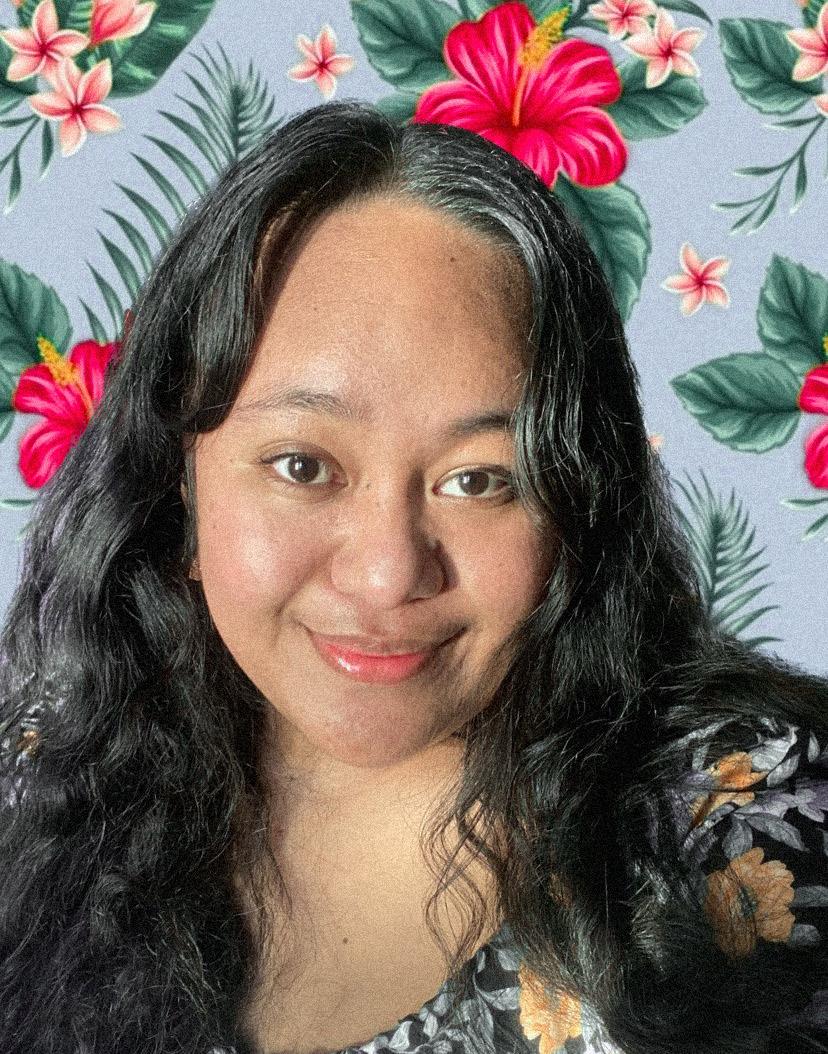
In the heart of the vast Pacific Ocean lies a realm of unparalleled natural beauty, vibrant cultures, and the essence of life itself—Pacific Island life. Like the birth of a world, at the genesis of our unique and enchanting way of life is a captivating story that weaves together ancient traditions, indigenous wisdom, and inexorable forces of nature. Within the boundaries of this captivating narrative, we uncover the essence of existence that defines the Pacific Islands.
Picture yourself on a secluded beach with powdery white sand, framed by swaying palm trees and crystal-clear turquoise waters. The scent of salty ocean breezes mingles with the aroma of tropical flowers. This idyllic scene is but a glimpse into the genesis of Pacific Island life—a harmonious union of humanity and nature.
For years, the indigenous peoples of the Pacific Islands have thrived in these remote paradises. The Islands are a testament to their resourcefulness and deep respect for the environment. They've constructed unique civilisations founded upon sustainable practices, communal living, and a profound connection to the land and sea.
The pulse of Pacific Island life beats in rhythm with the ocean's tides. Fishing, for instance, is not merely a means of sustenance but a spiritual endeavor. The ancient art of navigation, passed down through generations, allowed Pacific Islanders to traverse vast expanses of open water with nothing more than their intuition and the stars above. It's a testament to their understanding of the natural world, which extends far beyond the horizon.
Family and community lie at the heart of Pacific Island life. Villages are close-knit, and relationships are paramount. Traditional ceremonies and rituals are woven into the fabric of daily life, fostering a deep sense of belonging and identity. Elders, as the bearers of ancestral wisdom, are revered, and storytelling remains a cherished pastime, preserving the rich tapestry of cultural heritage.
Yet, the story of Pacific Island life also grapples with challenges. Climate change poses a profound threat to these low-lying islands, as rising sea levels encroach upon homes and livelihoods. The genesis of Pacific Island life is at risk of being overshadowed by the impending environmental crisis. Communities are banding together, drawing from their age-old resilience and resourcefulness to combat the threat and find sustainable solutions for the future.
Today, Pacific Island life reflects a dynamic interplay between tradition and modernity. Visitors to these islands are greeted with warm smiles and open arms, eager to share their cultures and traditions with the world. Tourism, while providing economic opportunities, also presents challenges in maintaining the delicate balance between preserving tradition and embracing change.
The traditional arts and crafts of the Pacific Islands, from intricate tapa cloth to beautifully carved canoes, continue to thrive, serving as living artifacts of a rich heritage. Music and dance, too, resonate with vibrant rhythms, celebrating the spirit of life and connection to the earth. Visitors can partake in these cultural expressions, immersing themselves in the genesis of Pacific Island life.
As you stand on the shore of a Pacific Island, feeling the gentle caress of the trade winds and the soft touch of the sun's rays, you are witnessing the ever-evolving story of Pacific Island life. It is a narrative of resilience, community, and reverence for nature—a testament to the enduring spirit of the Pacific Islanders.
In a world that often races forward, Pacific Island life stands as a reminder of the value of harmony with the natural world and the significance of cultural roots. The genesis of it all, in these enchanting islands, beckons us to connect with our shared human heritage and to tread lightly upon this fragile Earth. It is an invitation to learn, to appreciate, and to cherish the profound wisdom embedded in the heart of Pacific Island life.
So, come, be part of this genesis—a journey that transcends time, culture, and geography, and discover the Pacific Islands in all their splendor, where life unfolds in harmony with the rhythms of the ocean, the land, and the human spirit.
Welcome to
Meitaki and Fa’afetai, Porita
Fruean
For the Pasifika people, the concept of From the Ground Up takes on profound significance. It encapsulates their deep-rooted connection to the land and the way they have built their communities, cultures, and traditions over generations. The Pacific Islands, where these resilient cultures thrive, are a testament to the idea that everything begins with the land beneath their feet.


Pasifika communities have nurtured their identities, languages, and heritage, drawing inspiration from the rich soil and natural resources that sustain them. The coconut trees are a living embodiment of the concept From the Ground Up, it is a symbol of life and abundance. It embodies the notion of growth, as it emerges from the earth, providing not only substance, but also the raw materials for crafting tools, building shelter, and celebrating unique cultures.
From the fertile soil to the towering coconut palms, the Pasifika people have cultivated a way of life that is deeply grounded in their environment. Their traditions, values, and sense of community have grown from the ground up, reflecting the enduring resilience and resourcefulness of our islands. From the Ground Up is more than just a saying, it is a way of life, a reminder of the enduring connection between the Pasifika people and the lands that have shaped their identity.
Words by Porita Fruean (she/her)We are delighted to present the heart and soul of the Pasifika Students Council—we are your dedicated team of passionate individuals committed to uplifting and advocating for our vibrant community. As we strive to unite and empower our members, it is our pleasure to introduce ourselves, your team that works tirelessly behind the scenes to make our vision a reality.

PRESIDENT:
LULANI SIEMSEN-LOULANTING
Samoan (she/her)
VICE-PRESIDENT:
VAETOEIFAGA APELU
Samoan (she/her)
SECRETARY:
LAUREN SIEMSEN- LOULANTING
Samoan (she/her)
VICE-SECRETARY:
WILLIAM JACKSON WATKIN FOLAU
Tongan (he/him)

TREASURER:
MO’UNGA VIVILI
Tongan (she/her)
VICE-TREASURER:
JASMINE NAVALA WALEAFEA
Solomon Islands (she/her)
ACADEMIC OFFICER:
PORITA LAVANIA DAISY FRUEAN
Samoan (she/her)
VICE-ACADEMIC OFFICE:
THESSALONICA VAOATEA LUAMANUVAE
Samoan (she/her)
WELFARE OFFICER:
SESILIA WATKINS-FILITONGA
Tongan (she/her)
POSTGRADUATE OFFICER:
UPUTAUA LEFAUAITU
Samoan (she/her)
PUBLIC RELATIONS OFFICER:
WESLEY POTOGI
Samoan (he/him)
EVENTS OFFICER:
REBECCA SOLOI
Samoan (she/her)
Together, we form a close-knit family, driven by a common purpose—to create a nurturing and empowering space for every member of our community. Our aim is to celebrate our unique Pasifika heritage, support one another, and foster growth and unity. Stay connected with us as we embark on this journey of togetherness, growth, and success.
FAKAAUE LAHI, MAHALO, MAURUURU, VINAKA, MALO’AUPITO AND FA’AFETAI TELE LAVA.
PSC EXECUTIVE
With the upcoming 2023 election only weeks away, it is extremely important for us as Pasifika to play our part and vote. Voting ensures that we are represented in Parliament and that we are at the head of the table when it comes to decision making that impacts Pasifika people.
Here are a few things to ask yourself before the upcoming election:
1. Have I enrolled to vote, and have my family and friends enrolled to vote too?
2. Which party will implement the values of myself and my family, and fulfil what we need in order to succeed?
3. Do I know what the policies are for each party and for my electorate candidate?
4. What do I want to see for myself and my communities in the next three years?
5. How can I ensure that the next government is one that I can hold accountable for their promises?
If you haven’t enrolled to vote yet, head to vote.nz and get enrolled! Voting for the 2023 Election opens 2 October and ends 14 October.
Our People in Parliament from the 2020-2023 term:
Labour
Carmel Sepuloni—Deputy Prime Minister 2023
Barbara Edmonds—Mana MP 2020-2023
Anahila Kanongata’a-Suisuiki—List MP 2017-2023
Anae Neru Leavasa—Takanini MP 2020-2023
Terisa Ngobi—Ōtaki MP 2020-2023
Jenny Salesa—Panmure-Ōtāhuhu MP 2020-2023
Aupito Su’a William Sio—Māngere MP 2008-2023
Tangi Utikere—Palmerston North MP 2020-2023
Poto Williams—Christchurch MP 2020-2023

Lemaunga Lydia Sosene—List MP 2020-2023
Green
Teanau Tuiono—List MP 2020-2023
Words by Sesilia Watkins (she/her)
Te Mana Ola is the first ever Pacific health strategy, released in July 2023. It is a part of the Pae Ora: Healthy Futures Strategy, written to help form more equitable, accessible, and cohesive health and wellbeing for Pasifika in Aotearoa.
Te Mana Ola is for-Pacific-by-Pacific based strategy, developed using engagement with Pacific peoples through 40 fono (meetings) throughout Aotearoa and data collection to ensure that the strategy aligns with what Pasifika for their health and wellbeing. This engagement and data shows there is a desperate need for Pacific peoples to be prioritised in our health system and by our governments in order to alleviate disparte health outcomes for Pasifika.
“Change of this scale will take time, however, health isn’t just a short-term outcome. These strategies provide the direction for lasting change,” said Dr Ayesha Verrall, Minister of Health, of the Pae Ora: Healthy Futures Strategy at its release.
Te Mana Ola strategy sets out implementable actions to improve health outcomes, and ensures that those actions are fulfilled. It helps Pasifika feel confident in holding our governmental organisations to account if they do not fulfil actions to improve health and wellbeing needs for our community.
On August 8, 2023, bushfires swept across the island of Maui, leaving devastation in their wake. It was an unprecedented challenge for Maui, known for its breathtaking landscapes, warm communities, and vibrant culture. While the fires brought forth tragedy and heartache, they also illuminated the extraordinary spirit of resilience, unity, and determination that defines this tropical haven.
Fueled by a prolonged dry spell and fierce winds, the fires raged across Maui's picturesque terrain, threatening homes, wildlife, and landmarks. The fires were an unmistakable tragedy, with nearly 11,000 people displaced, as well as 30 missing and a death toll of at least 97.

The island's emergency services, alongside courageous volunteers, fought tirelessly to contain the flames, risking their lives to protect the community and its natural treasures. Their unwavering commitment is a testament to the indomitable spirit that defines Maui's people.
As the fires raged on, Maui's residents rallied together. Evacuation centres sprung up, offering refuge to those displaced by the flames, embodying the true meaning
of 'ohana' the Hawaiian concept of family and community. Neighbours reached out to help neighbours, exemplifying the island's unbreakable bonds.
Alongside human compassion, the fires also sparked a renewed commitment to environmental stewardship. Maui's residents and environmental organisations have joined forces to restore the island's ecological balance, planting trees, and nurturing scorched landscapes back to life. The bushfires served as a stark reminder of the urgent need to address the climate crises and protect our fragile ecosystems.
In the midst of this tragedy, Maui has found strength in adversity. The island's resilient spirit has shone brightly, rekindling hope for a brighter future. Maui's communities are now united, stronger than ever, and committed to safeguarding their beloved home. As the healing process begins, the people of Maui are determined to rise from the ashes, restore the island's beauty, and continue to share their aloha spirit with the world.
To all the victims of domestic violence, you are warriors in my eyes. I SEE YOU! To all victims who have the courage to keep going despite your painful experience, you are an inspiration to everyone. Please continue to speak up, and as my sister Riri says, “Shine bright like a diamond.” Ofa Lahi Atu.
P.S.
As for the perpetrators of domestic violence, I hope they step on LEGO. But on a serious note, not everyone is a finished product, God may still be working on someone. Even if they are a perpetrator of domestic violence, people are allowed to change for the better, take Apostle Paul in the Bible for example. I hope that we can all facilitate healing by spreading love to everyone.
In August of this year, Kiwi artist Aaradhna, who is of Samoan and Indian descent, opened up via Instagram about her experience as a victim of domestic violence. I must be living under a rock, because I only heard of this incident when asked to write this piece. People may wonder why victims don’t defend themselves. The fact is, it’s not that simple. An outsider cannot see the circumstances or understand the complex emotions victims have to weave through within these situations. Speaking up can be dangerous for victims, especially if they’re still in contact with their abuser. Aaradhna may have stayed silent because she wanted to protect her privacy and vulnerability, maybe she wanted to maintain a certain image for her fans, or maybe she didn't want to hurt the perpetrator’s family. Who knows?
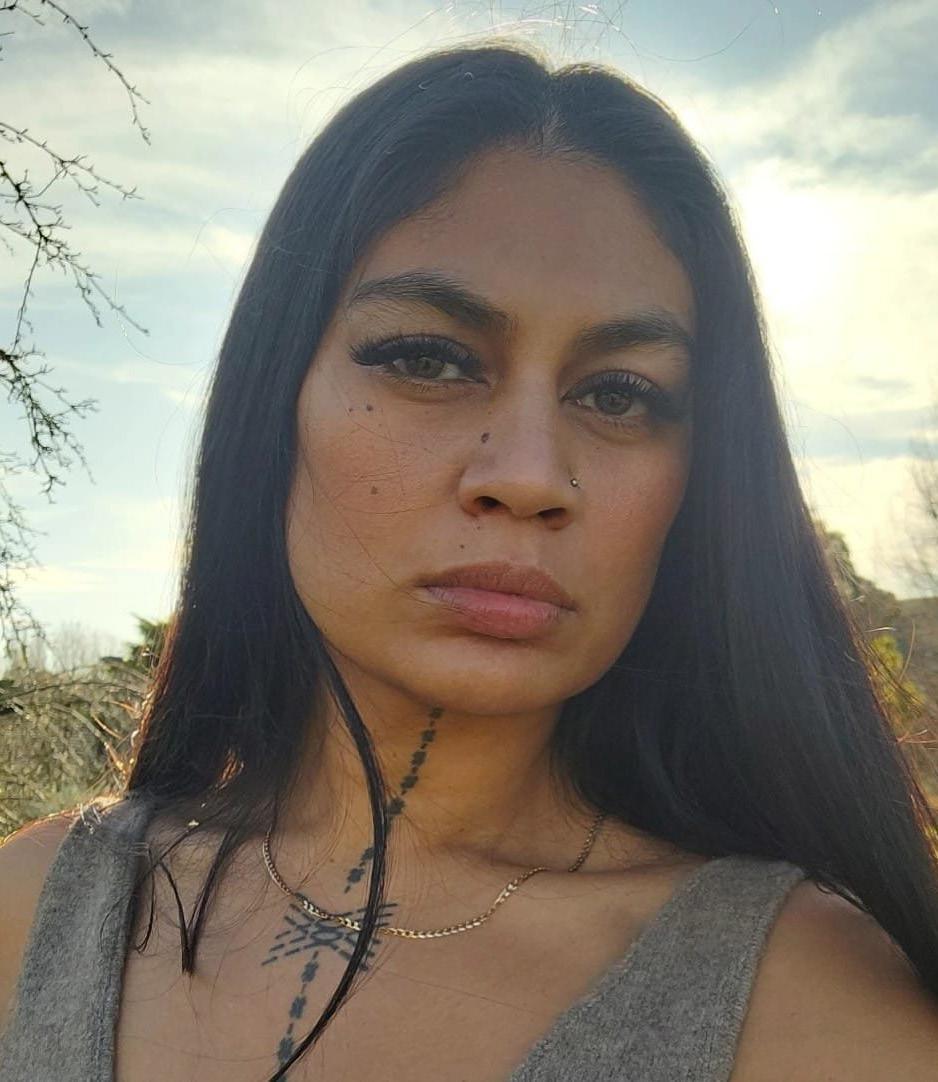

My heart broke hearing about Aaradhna having to mourn the loss of her mother while going through all this. But what matters most is the courage our girl had to speak up, as this encourages other victims to also speak up. Speaking up, when you can do it safely, re-enforces for victims that this type of behavior is not their fault and also puts a message out to the public that this behavior is not to be tolerated.


 Words by Rebecca Soloi (she/her)
Words by Rebecca Soloi (she/her)
The Rugby League World Cup is one of the most prestigious tournaments in the sport, where nations from around the world compete for the ultimate prize in rugby league glory. In October 2022, Toa Samoa, the national rugby league team of Samoa, embarked on a remarkable journey that showcased their passion, determination, and unwavering commitment to the game. While the tournament brought both triumphs and challenges, the Samoan squad left a lasting impression on fans and the rugby league community worldwide.
Toa Samoa kicked off their 2022 Rugby League World Cup campaign with high hopes and a strong sense of purpose. Drawn into a competitive group alongside Greece, England, and France, they faced a daunting challenge right from the start. Their opening match against England was a contested battle that showcased immense talent and skill on both sides. Despite a valiant effort, Samoa lost to England, with England scoring 60 points while Samoa was only left with 6.
After the loss to England, Toa Samoa was ready for a comeback. This time, they came out firing on all cylinders, delivering a dominant performance that resulted in them advancing to the finals against reigning champions Australia. Despite losing in the grand finale, at that point, it wasn’t about winning or losing. Toa Samoa has achieved what was deemed impossible, uniting a nation spread throughout the world to show not only their support but their mana as a community like no other.
Their mana was celebrated and showcased through parades, where supporters near and far gathered
with their flags and cars and drove around a certain part of the city. There were parades from Brisbane and Sydney, Australia; to Auckland and Wellington, New Zealand; to our lovely capital of Apia, Samoa. A stream of red, white, and blue was seen on our streets, in our homes, and in our cars. I even witnessed a group of people covered from head to toe in blue paint. The support was never-ending, and I couldn’t be prouder to be Samoan.
Toa Samoa's journey in the Rugby League World Cup 2022 was a testament to the power of passion, determination, and national pride. While they faced challenges and heartbreak along the way, their performances on the field and their commitment to representing Samoa left an indelible mark not only on the rugby field but the world. As they look ahead to future tournaments, Toa Samoa stands as a shining example of what can be achieved through hard work, unwavering dedication to the sport, and the mana of a nation supporting you through it all.

The first thing I think about is our community, our ainga, our kainga, like, our collective solution finding.

I think for me it'll be the ocean.
It’s that bluegreen, the beauty of the islands and the villages.
For me it's the food. You can't go past a good ika mata or something like that, so good!

I love that Fiji just beat Australia in the world cup after 69 years!
CHANGE
Are you passionate about creating environmentally sustainable cities? Shape the future with the Master of Urban and Regional Planning. Discover a world of cultural, ecological, and design innovation while planning for a just and sustainable tomorrow.

This qualification will help build your career and give you opportunities to work in highly in-demand roles locally or further afield. We welcome students with a variety of backgrounds and skillsets.


What comes to mind when folks talk about Pasifika arts and culture? It’s food, fashion, celebrations, music, dance, and language. Of course, these visible forms of culture are important, and writing about these things takes a powerful pride in our culture. We embrace these tangible art forms as crucial parts of our way of life… the islander life.
For this article, I have decided to go beyond the face value arts and culture. I want to explore the essence behind island food, past our native languages and underneath the clothes we wear. The spirit of relationships, relatives, and ancestry. The cultural core that connects me to a friend’s aunt's sister or a neighbor’s brother’s kid. It’s what makes us Pacific people a family, regardless of whether we’re blood related.
Ever since I left home, I’ve felt immensely homesick, almost like I’m soaking in sadness. I now feel the need to call home every week and feel like I’m missing out.
I’m really grateful for the Pasifika community here in Wellington, they’ve become a new home for me. You would think that it would be hard for islanders in a university as big as VUW to meet and get to know each other, but thanks to spaces like the Pasifika Student Council, we can. We can all relate to each other because we’re all from the islands, so conversations come easy and relationships can form naturally.
We are not called ‘One people, One Ocean’ for no reason, we’re all connected in one way or another.
Obviously, we’re still all individuals within that. We each have our own unique differences with individual experiences. But regardless, we’re all intertwined within the Pasi way.
It’s doing the dishes and then getting smacked for not doing the dishes fast enough.
It's asking for permission to go to a friend’s house at the age of 26. A yes never comes easy, no matter how old we get.
It’s meeting your girlfriend’s hamo dad, who is nice, but without a smile.
It’s sending money home because your cousin wants to buy a new Alcatel phone.
It’s making sure that everyone walks home with a good deal of kai in their puku, or else, you risk becoming the talk of the town.
Yes, these are stereotypes. But to be honest, for a lot of us, these little things are our way of life. At least they are for me… as a brown Pasi kid. These are our dynamics. This is what lies beneath the beautiful visual aspects of our culture.
I know that you know, that we all know, this is the islander life.
It’s never anything serious with us. Just a good laugh over the simple things as we watch our relationships build, memories form, and lives unfold.
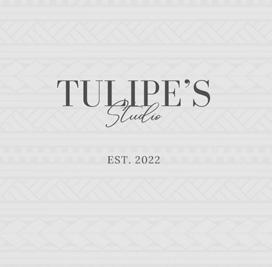
Mālō le soifua maua ma le lagi e mamā. O lo’u igoa o Vienna Futi, and I’m a proud Pasifika freelance makeup artist based in Porirua.
During the 2020 lockdown, I saw myself picking up the brushes and creating fun and simple makeup looks. As we eased out of lockdown and back into (some sort of) normality, I continued offering makeup services for family and friends.
I draw inspiration from other Pasifika. Pasifika who take up space despite the discomfort. I’m reminded that we, as Pasifika, are creative, innovative, and adaptable. This is what inspired me to launch Tulipe’s Studio.

I offer soft, full, and festive glam for various events and occasions.
I am blessed to be in this creative space where I get to connect with other Pasifika, listen to their stories, and be part of their special events. Fa’afetai tele lava mo le avanoa, Ia manuia.
Asomua Atua Peniamina, business owner of Matai Ink tattoo studio in Wellington.
Matai Ink is inspired by our markings; it is a story we carry throughout generations. It is important to me as an artist to keep motifs of our culture alive through tattoos.

I specialise in contemporary Polynesian and fine line tattoos. I strive to craft unique pieces that tell your story, celebrate your culture, and mark your heritage.
Whether it is your first tattoo or you’re a tattoo enthusiast, it is important to me that your experience at Matai Ink is memorable and leaves you with a lasting piece of art that represents your culture.
Pop in to my studio at 2B/97 Taranaki Street or view my work on Instagram.
The Creative_Wezz brand focuses on Pasifika designs to bring people's visions to life. Through different media from graphic design, creating illustrations, logo making, t-shirt designs, and photography, Creative_Wezz aims to explore Pasifika identity throughout design.
Creative_Wezz was established in 2019 to explore my passion for music and design. Things started to take off over the course of Covid-19 lockdown, like other small businesses.

Four years later, I am currently studying towards a Bachelor of Design Innovation to further my love and understanding of what I do best.
I draw inspiration from my parents and the work that they do within the Church Ministry. Your talent is God’s gift to you, and what you do with it is your gift back to God. Creativity has always been a part of my life. Through the use of tautua, I aim to give back to my parents with the many blessings they have gifted me with.
We are a team of four inter-disciplinary Pasifika designers utilising design as a tool to innovate our va, based in Wellington.
Vain Creative launched in 2020 and since then, we have worked on various projects ranging from social media content, branding, logos, websites, and videography. We have a dual purpose: we want to re-imagine design with a Pasifika-centred lens and push our community forward with future technologies.
Having all come through tertiary institutions that taught us the tools and trades of the ‘traditional designer’, we’re now wanting to push the boundaries of what it means to be Pasifika designers and creatives.
Our drive is embedded within the narrative behind our name, Vain—to continuously innovate the vā (space) we occupy. We’ve come to understand that innovative and effective design is built upon collaboration and relationships and our design practice is reflective of this.

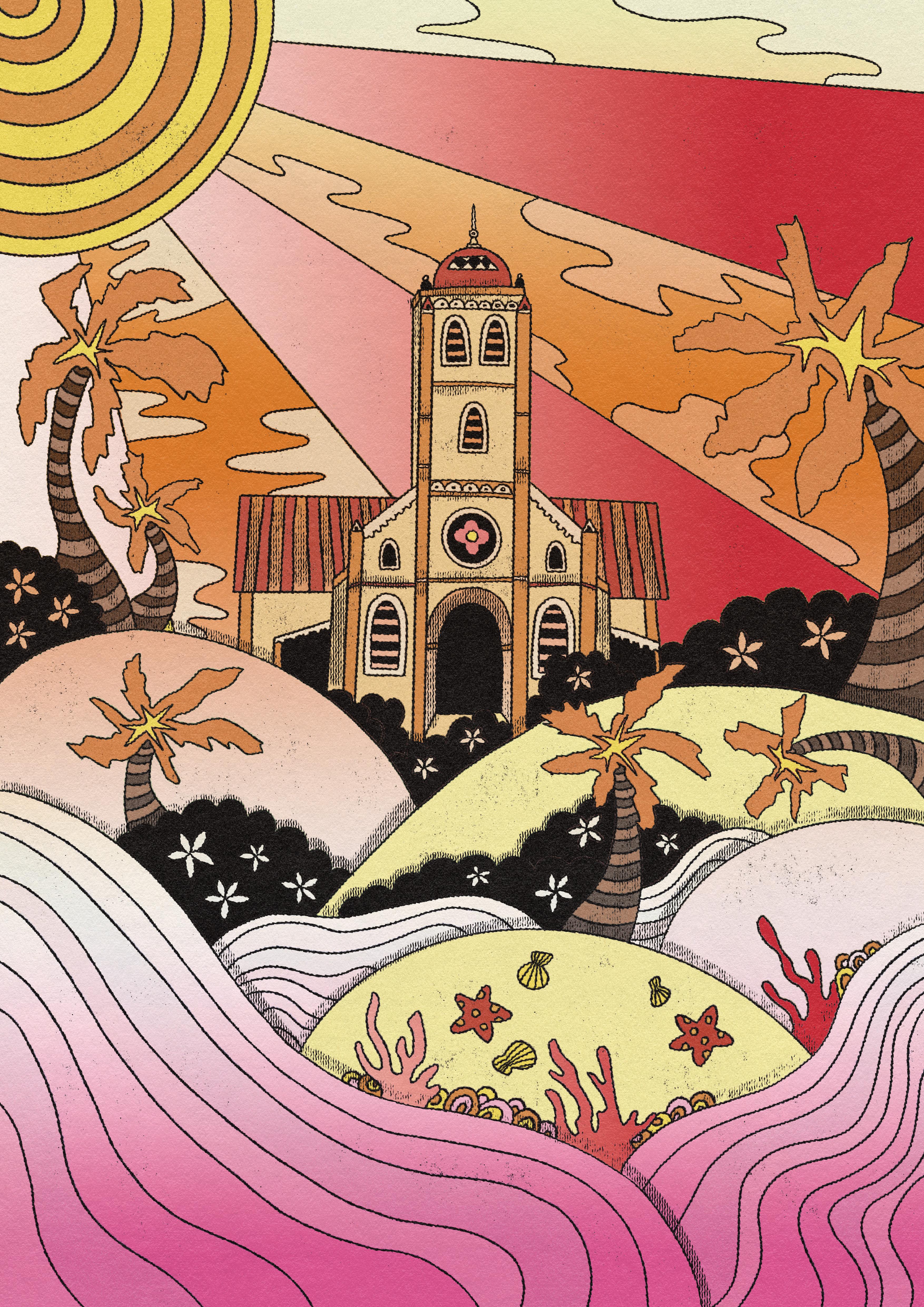 Words by Porita Fruean (she/her)
Words by Porita Fruean (she/her)
Let me help you. I am sure you think of white sandy beaches, crystal-clear turquoise waters, and swaying palm trees. But what you might not know is that behind these serene shores lies a treasure trove of humour, quirks, and downright hilarious traditions that make up the ‘Real Island Way’. So, let's dive in. I’ll introduce you to the humorous side of these paradisiacal lands.
We Islanders have our own way of uncanny knack for turning every situation into a laugh-out-loud moment. So prepare to chuckle your way through the hilarious world of the Pacific Islanders.
Ah, Island Time, the mystical realm where clocks are just fancy decorations and schedules are as flexible as a yoga instructor. In this enchanted land, minutes turn into hours, hours into days. The phrase ‘I'll be there in five minutes’ translates to ’I’ll see you sometime this week, maybe’.
Let’s imagine what it’s like to make plans on Island Time for a moment... You set a meeting for 2 p.m, but when you arrive, the whole island is on siesta and your watch is broken. Islanders have mastered the art of being fashionably late where being on time means showing up before sunset. We Islanders laugh in the face of deadlines and give procrastination a new tropical twist.
On Island Time, you'll often hear phrases like ‘soon come’ or ‘Fiji time’ (which is essentially a polite way of saying ‘whenever’). Island Time lives within its own world where ‘rush hour’ is replaced by ‘leisurely saunter hour’—trust me, you're more likely to see a sloth racing a turtle than anyone in a hurry.
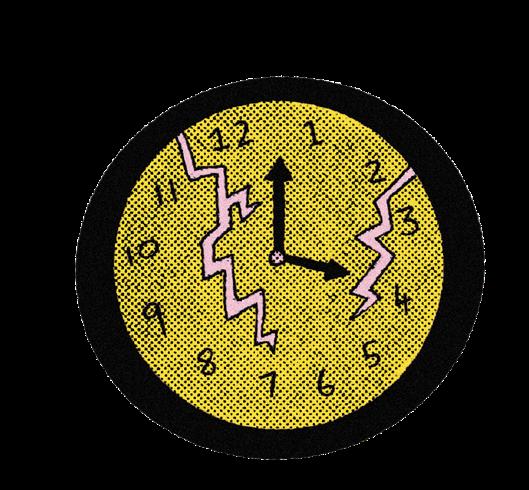
In the Outside World, we have to bend ourselves into becoming slaves to the clock, trying to cram as much as possible into every second. But on Island Time, each moment is savoured like a ripe mango, and there's always extra room for one more joke, one more song, and one more sunset. So, the next time you find yourself on Island Time, remember to take a deep breath, relax, and embrace the laughter that comes with living life in the slow lane.
In the Pacific, ‘No Worries’ has been transformed from a phrase to a philosophy that Pacific Islanders live by. The ‘No Worries’ philosophy is a delightful glimpse into a world where stress takes a back seat, and life is lived with a perpetual grin. It's a way of life, an unwritten code that keeps all Islanders consistently chilled out.
In a world where people's brows furrow over every little inconvenience, Pacific Islanders have a knack for finding humour and happiness in the most unexpected places.
Whether it's a boat mishap, a sudden downpour on the beach, or a coconut falling from the sky (yes, it happens!), our response is almost always met with a carefree shrug and a chuckle: “It’s no worries, we’ll be all good.”
It's as if Islanders have unlocked the secret to eternal happiness—refusing to let life's curveballs disrupt their need for tranquility. In the face of adversity, we exude a sense of calm and optimism, and it's downright contagious. Islanders understand that life is a series of ebbs and flows, and fretting over every wave only leads to more unnecessary stress.
The ‘No Worries’ philosophy isn't an excuse for laziness; it's a reminder to be present and live in the moment, not to let life's hiccups dictate your mood or take away your happiness. So, the next time you're bogged down by the daily grind, take a page from the Pacific Islanders' book and remember: life is better when you don't sweat the small stuff, and sometimes, the best way to navigate the rough seas of life is with a sunny smile and a genuine ‘No worries, mate!’
On the sun-soaked Pacific Islands, there's a fashion trend that's turning heads and tickling toes: it’s flip-flops every day! Yes, you read that right—Pacific Islanders have taken footwear to a whole new level of casual, and it's causing quite a splash.
While the rest of the world debates the merits of sneakers, sandals, and stilettos, our island-dwelling friends have declared, “Why bother?” We've embraced flip-flops with such fervour that even the fanciest of occasions call for these rubbery wonders.
Imagine attending a wedding ceremony with the groom in a crisp tuxedo and the bride in a stunning white gown, both sporting matching flip-flops bedazzled with seashells and palm fronds. It's a sight to behold! And let's not forget the hilarious pitter-patter of flip-flops echoing through the church as the bride walks down the aisle.
But it doesn't stop at weddings. Pacific Islanders wear flip-flops to job interviews, business meetings, and even diplomatic summits. It's become a symbol of their laid-back lifestyle, and they're proving that you can negotiate peace in a pair of thong sandals just as effectively as in a stuffy suit.
So, next time you're agonising over your shoe selection, take a leaf out of the Pacific Islanders' book and embrace the flip-flop revolution. Who needs high heels when you can have high laughs and high tides?
Church in the Islands carries a unique and deeply rooted significance, blending faith, culture, and profound connection to the natural world. The Islands, with their breathtaking landscapes and close-knit communities, have nurtured a distinct religious experience that enriches the lives of all the Islands inhabitants.
On Sunday mornings, the resonant tolling of church bells beckons islanders from their homes, a harmonious call to gather in places of worship often adorned with vibrant tropical flowers and vibrant colours. These church buildings stand as architectural gems, reflecting a fusion of colonial, indigenous, and contemporary designs, each telling a story of our rich cultural heritage.
Islanders, dressed in their Sunday best, arrive at these places of worship not only to fulfil their religious duties, but also to foster a sense of unity within their communities. The church serves as a sanctuary for spiritual reflection, providing solace and guidance in the face of life's challenges. Hymns sung with passion and the soothing cadence of scripture readings create a unique melodic tapestry that resonated throughout the islands.
In Island communities, the church is more than a religious institution; it's a cornerstone of social life. After the service, gatherings spill onto lush church grounds, where families and friends share meals, laughter, and stories. These communal moments reinforce the bonds that hold Islanders together, celebrating the diversity of their traditions.
Yet, the Islands offer more than spiritual sanctuary within their churches. Nature, with its awe-inspiring beauty, plays a profound role in religious life. Many churches are strategically situated to frame stunning vistas of the sea, mountains, or lush forests. Congregants often find spiritual connection in the serene landscapes that surround them, strengthening their faith as they contemplate the divine within the breathtaking natural world.
In the Islands, church is more than a Sunday obligation; it's a vibrant mosaic of faith, culture, community, and appreciating nature. It stands as a testament to the enduring importance of spirituality in the lives of Islanders, woven seamlessly into the beautiful and intricate tapestry of their daily existence.
In the hilarious world of the ‘Real Island Way’, our journey through the quirks and oddities of life on a deserted island has been nothing short of a rollercoaster ride. From coconut-powered Wi-Fi to hermit crab fashion shows, we've explored it all.
It's about finding joy in the simple pleasures, like sunbathing next to a palm tree with a quirky sense of humour. It's about discovering that your only companions are a bunch of chatty parrots who insist on critiquing your cooking skills.
In the end, the Real Island Way teaches us that laughter is the ultimate survival tool. It's the secret ingredient that turns a mundane coconut into a hilarious comedy prop and transforms a lonely night into a stand-up comedy show for the ages.
So, as we bid adieu to our imaginary island paradise, let's remember to take a piece of that Real Island Way with us wherever we go. Because when life gets tough, a good laugh and a dash of absurdity can make even the most challenging situations feel like a tropical getaway.
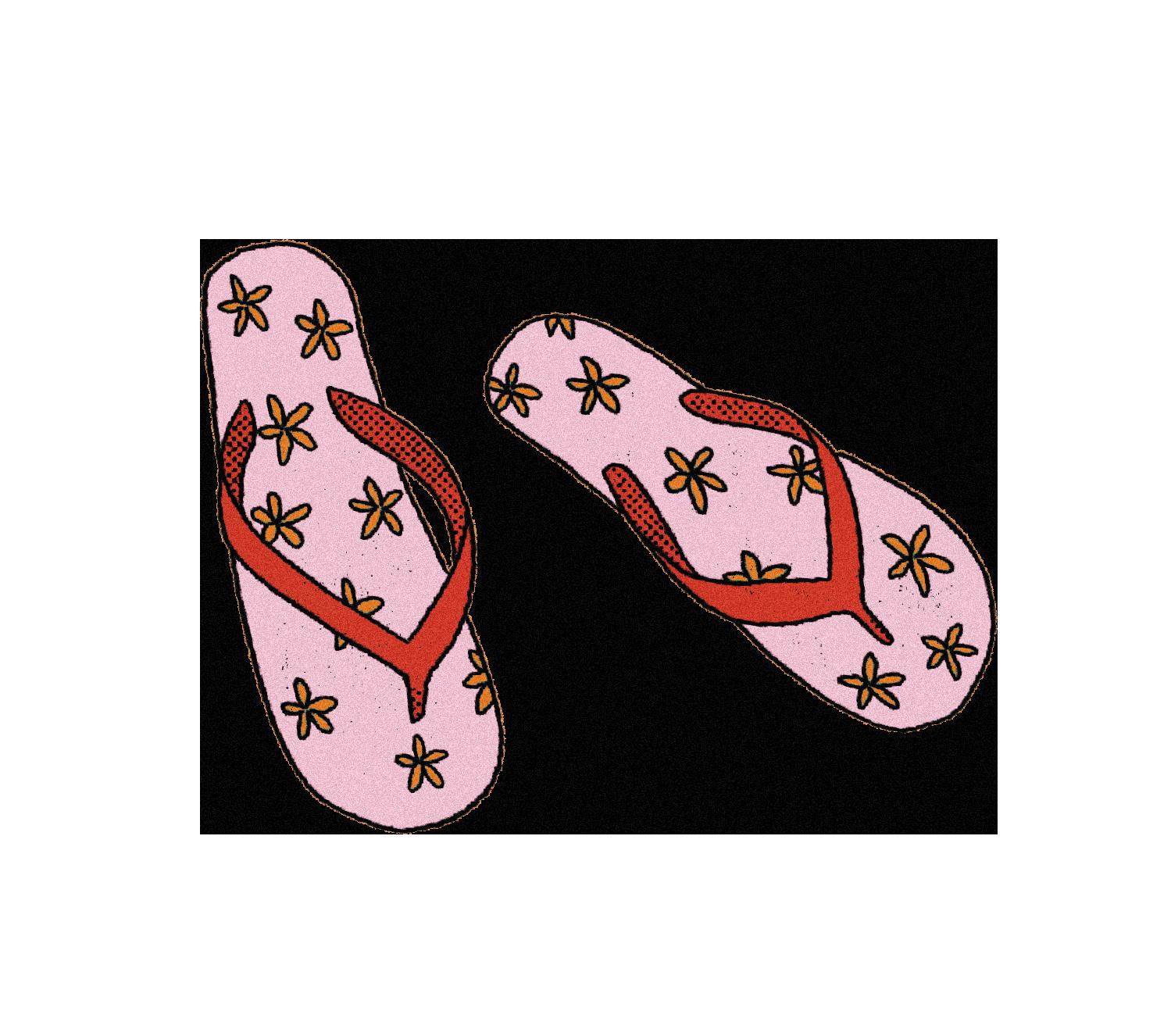
Words by Jasmine Navala Waleafea (she/her)
A significant attribute of the South Pacific region is its diverse cultures, dialects, and ethnicities. ‘Aelan’ means ‘Island’ in Bislama, the language of Vanuatu. For this ‘Aelan Lines’ section, we would like to give you insight into Pacific Island diversity through introducing some current Pasifika VUW students who are also important Pasifika figures in their own right.


As they’re all Pasifika from varied home lands and with unique native languages, they represent the rich and varied ethnicities within the Pacific Islands (Melanesian, Micronesian, and Polynesian). We have also highlighted other Island ethnicities that have become an integral part

“Taem Yu Tingting Tumas Lo Ol Wari Lo Laef, Bai Yu Gat Plenti Mo Wari. Tasol Sapos Yu
Lukluk Tasol Lo Wanem Gutpla, Yu Ken
Lainim Samting Wei Bai Givem Yu Sanis Lo Wokim Gutpla SamtingToo”
Native language: Tok Pisin
From: PAPUA NEW GUINEA
“Nomata Wat Bae Happen
Choosim Happiness No Tingim Negative Samting Olowe, Ting Folom Oloketa Positive Samting Mekem Laef Blo Iu Gudfala”
Native Language: Solomon Pijin From: SOLOMON ISLANDS
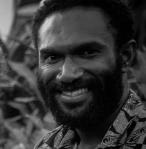


“Plan Ke Bina
Goal Khali Wish Hai”
Native Language: Indo-Fijian From: FIJI
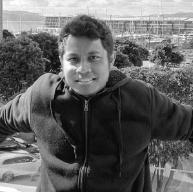

“Ita Hotu Bele Hamriik Aas, Se Ita Tau Fiar Iha Ita Nia Hun”
Native Language: TeTum
From: TIMOR LESTE
of our Pasifika community; for instance, our Indo-Fijian communities and other associated cultural groupings in South Asia.
Each person was asked to provide a quote to echo the theme of having Pasifika roots and the courage and unity within our community.
Disclaimer: The common quotes and phrases used are borrowed and acknowledged for the purpose of this publication, however the translations are accredited to the contributors themselves.
Te Filiga Ne Koe Ke Fai A Uiga Lei, Mote I Ai Ote Loto
Fakafetai Kae Kaugofie
Ka Taki Kae Fakaasi
I Ei Te Auala
Ote Olaga E Olangina Ne Koe”
Native language: Te Ggana Tuuvalu
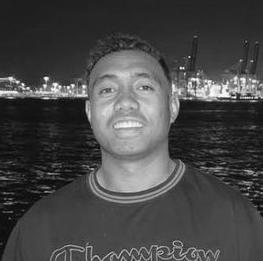
From: TUVALU
“Taem Yumi Gat Wan Rus
We I Grow Dip
Yumi No Nid Blong
Fraet Long Eni Win”
Native Language: Bislama
From: VANUATU
“Ni Titobu Na Waka Ni Kua
Ena Sega Ni Gadrevi
Me Rerevaki Na Cagi”
Native Language: Fijian
From: FIJI
“A’oa’o le Mafaufau E
Va’ai Le Lelei I Tulaga
Uma E Te Faegai Ai”
Native Language: Gagana Faa-Samoa
From: SAMOA
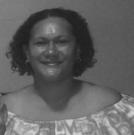
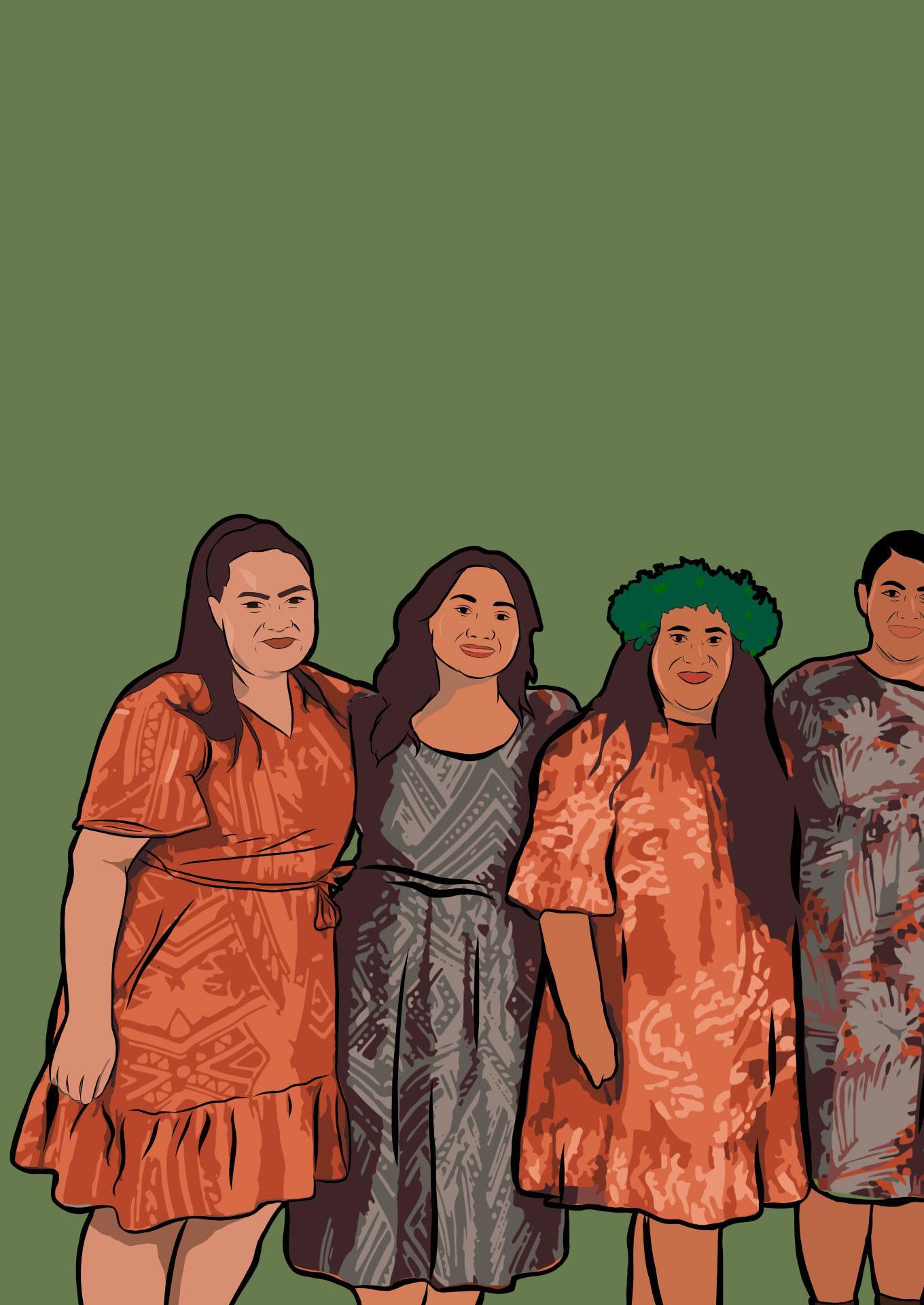
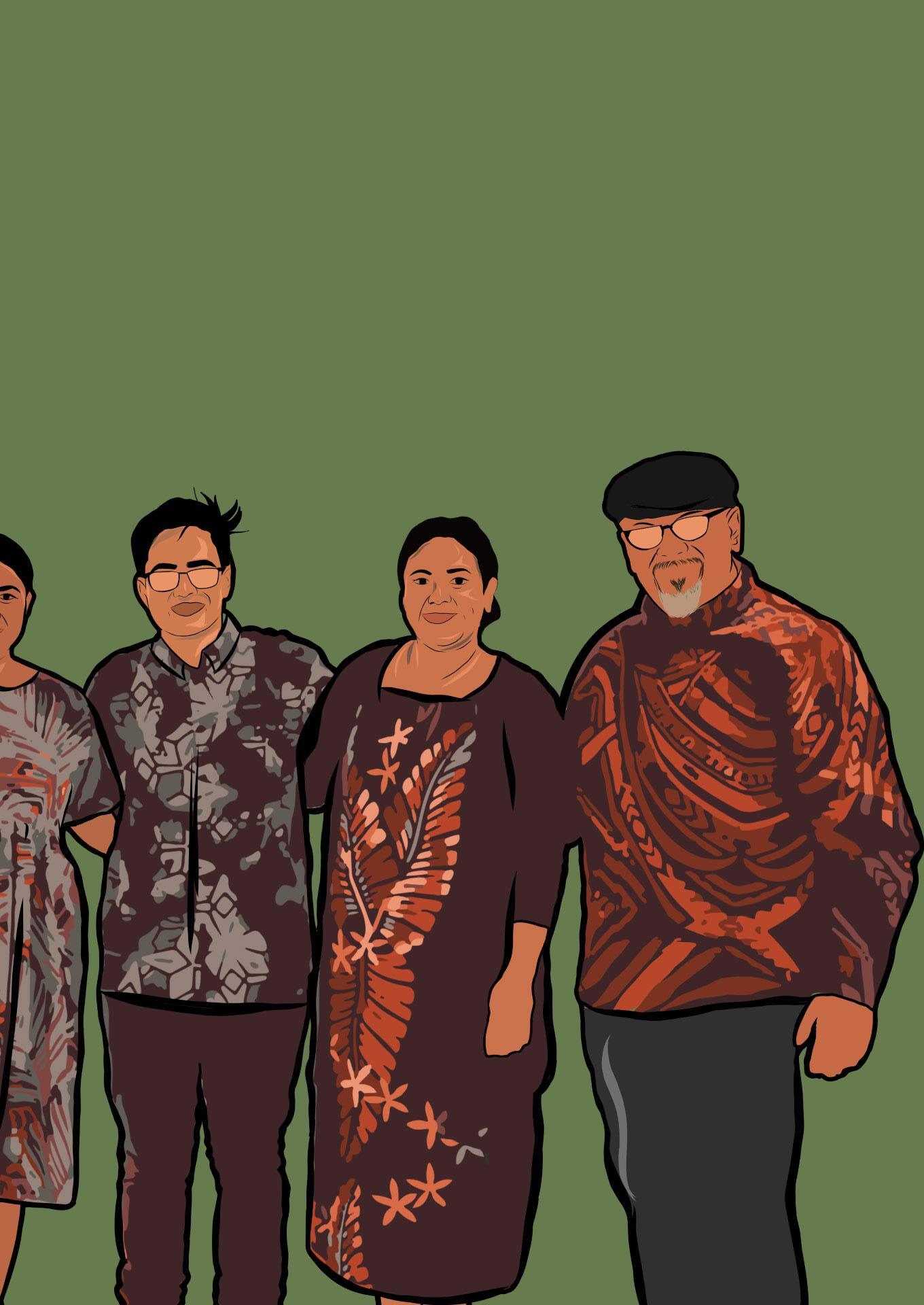 Words by Grace Fakahau (she/her)
Words by Grace Fakahau (she/her)
As the stars twinkle in the night sky, they twinkle like us, the grandchildren in my grandparents’ eyes.

As the sun rises and the sky light sweeps the darkness of the night away, I rise too, in my grandparents' home. As the pan of eggs seethes and toast jumps up from the toaster’s heat, I jump to the large breakfast table and prepare for my grandfather’s prayer.
As the food is passed down the table for breakfast, I am not only eager for the arrival of the food, but also for my grandfather's stories.
My grandfather, who sailed the sea in the 1990s, tells me about my Pacific heritage. He tells me about the days he climbed up the coconut trees,
the peaceful Sunday mornings at church with young children belting hymns from their little chests,
the warm sun that shines through the sky and pigments his skin,
the days he spent swimming swiftly through the clear waves at the beach with my family, the days of hard yards, learning cultural dances and performing them to his village, the days of showering in the rain while the warmth of the sun beams onto him, the days of riding his children to school on the back of his motorbike,
he wants me to relive those days and experience the joy in my motherland: island joy, just as he had in my homeland.
He awaits the day I head to the home I have never been to,
the day where he can give me a tour of his village, the village that lights up at night from the full moon and stars sparkling in the night sky. He awaits the day we head to the friendly islands together.
But how long does he have to wait before my island finds itself underwater?
To find my island sunk?
To find my people evacuated?
To find my land gone?
How long do I have left until I find my island under the sea?
How long do I have left to bury my elders in their homelands?
How long until it’s too late?
History has been erased by the creation of a friendly yellow sponge.
‘Bikini Bottom’ is what they call my long-lost friend, Bikini Atoll.
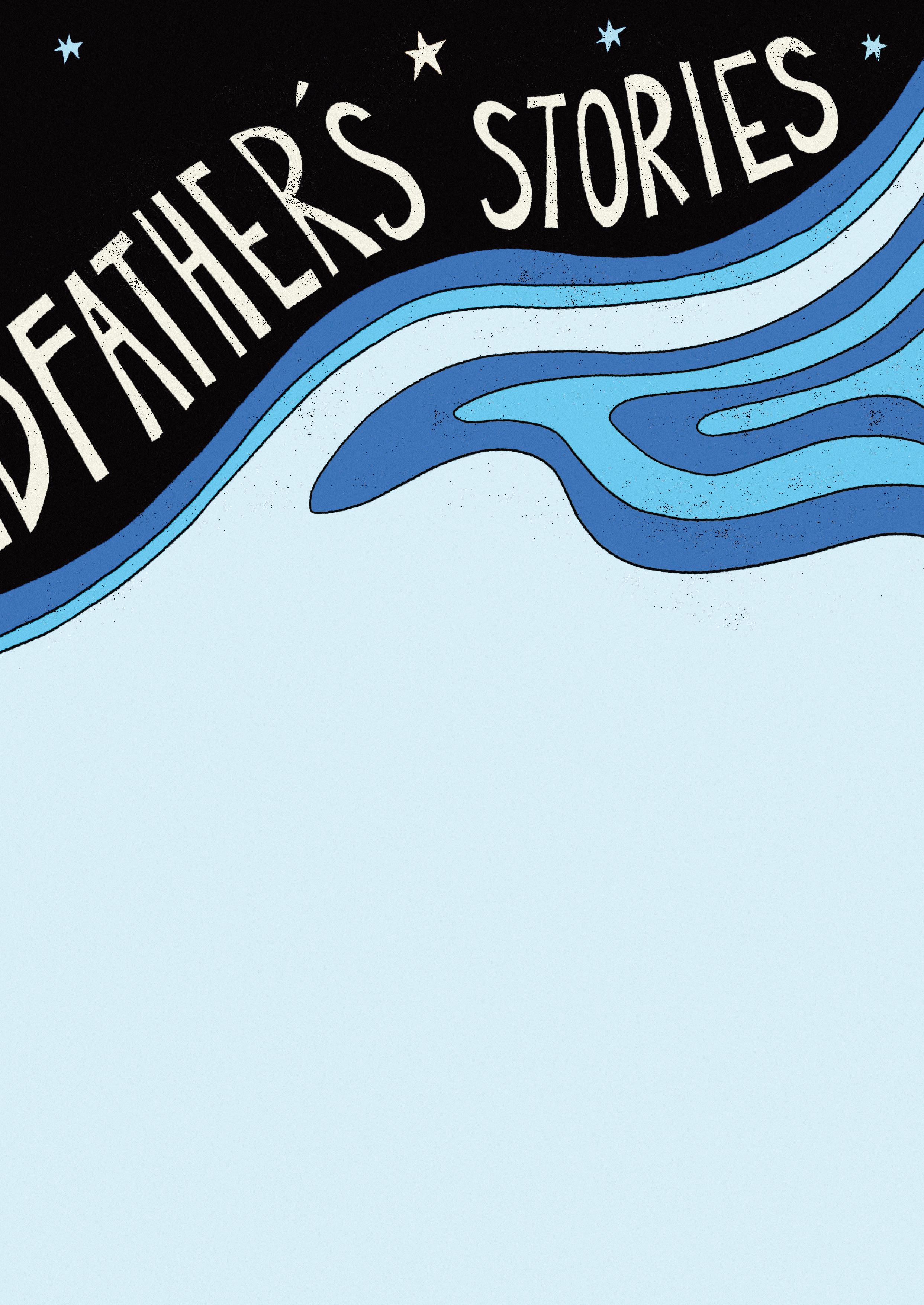
But like the sole on the bottom of one's shoe, we are stood on by the world. We’re forgotten, because apparently, we depend on the rest of the world. We are called leeches, sucking the resources from the developed countries around us, sucking their economy from the land— the land in which they stole, sucking their pockets dry, sucking.
They say we depend too much, so we suck. My history fades as they parade on my stage. But they need to see that we are the ones who aid. We are the market for their ‘stuff’.
We are the origins of their economy. We grew their agriculture. We lost our land and culture to grow theirs. If anyone is dependent, it’s them. They are the leeches, depending on my islands for their Instagram pictures at a beach, depending on my islands to book their tropical holiday homes, they contribute to my islands sinking through climate change alone. We are exploited.
My Pacific islands face the effects of climate change today.
The flooding, the rain, and storm surges increase as the floods of people at church on a Sunday morning decrease.
The vibrant worshipping voices that steam up the warm Sunday mornings are now silent as they await the storm to pass and the sea to calm.
The land that is my own home now belongs to the sea. My islands continue to sink into the sea as the developed government continues to sink into its caucus bench.
The sea will rise, and my islands will sink, my ancestor's lands will soon become extinct unless the government of this so-called developed nation acts on its proposed climate emergency.
Will I even be able to visit my islands, a home where my ancestors lay, and my people pray?
Pray for the water to keep from rising and sinking my islands.
Pray, for the very water that connects my islands, will sink my islands.
This climate crisis is more than just the trees falling and the sea rising.
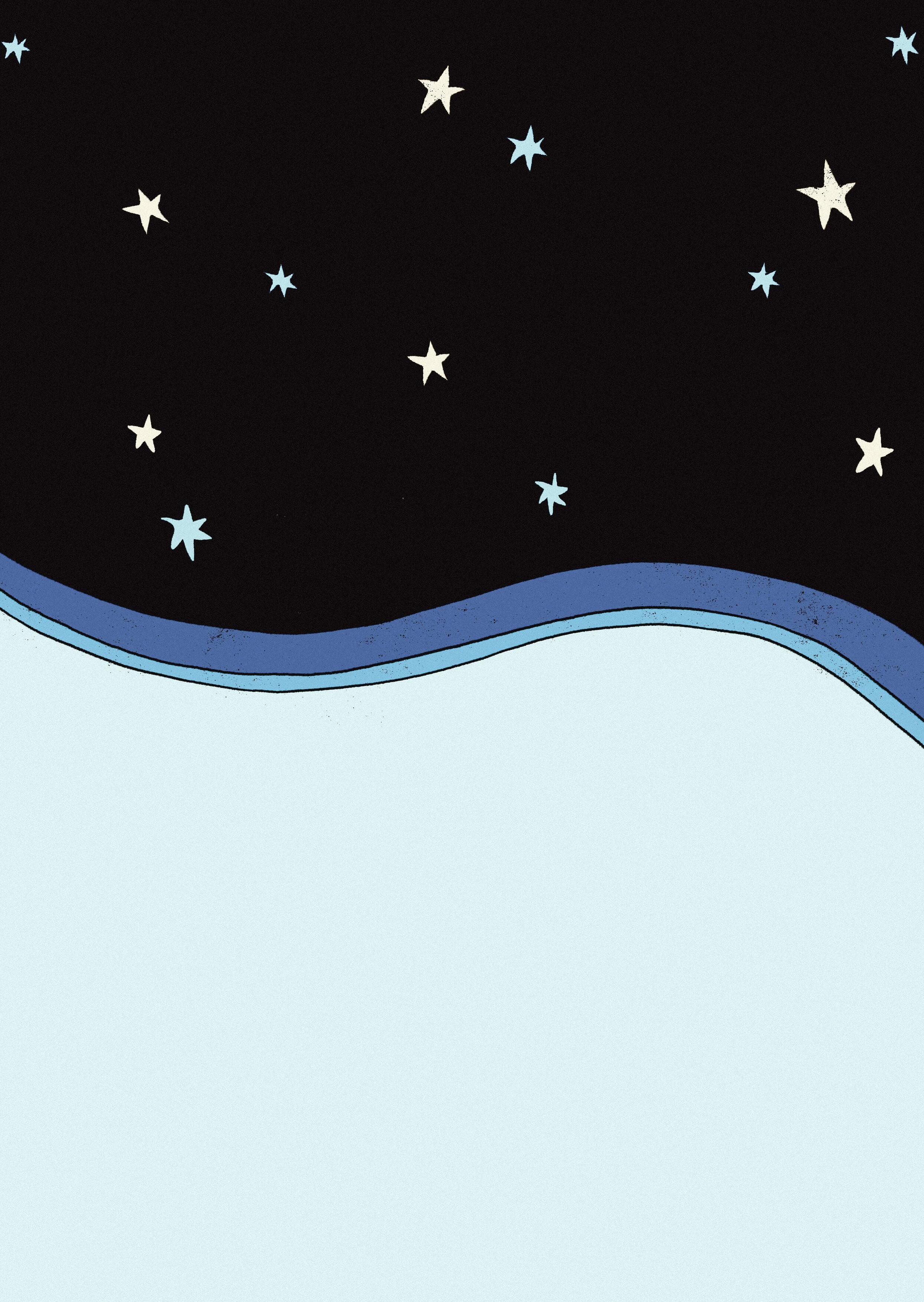
It is the children laughing and giggling to each other as they walk through the floods up to their waistline, holding bags of fruit above their heads.
It is the father who holds his son as he prays before the cyclone hits their village.
It is the food that’s given out for the price of love.
It is the churches where the village sleeps during the storm as one big family. These actions of resilience are mistaken as a sign that we’re okay.
As my ancestors above look over me, they ask why I am crying. They ask why their islands are dying. I try to explain this climate crisis as a whole, but I’m focusing below, as I tulou between their headstones, sinking.
As my voice breaks to save my islands, my ancestors ache as they sink into the dirty sea in silence. I will fight to save them. I will fight to save the Pacific.
For my ancestors who sailed the Moana, who were raided in their homes and on the streets, hoping for a lifestyle filled with endless opportunities for me, I raise my voice.
For my islands where my family lives and ancestors are buried, sea levels rise as my land sinks in a hurry, I raise my voice.
For my islands that you book for your ‘tropical’ holiday yet ignore the effects of this climate change sinking us, I raise my voice.
For my brown, Tongan, minority raised, child of immigrant parents, Salvation Army, Good Will, holey socks and shoes self, I raise my voice.
For my ancestors, for my islands, for the hood.
I raise my voice for my grandfather's stories.
I’ve always struggled with what box to tick on forms that only give you one option for your ethnicity.
It begs me to consider: well, am I Samoan, or am I European? I’ve ticked the latter more often. (It's something I am ashamed of). I’m not really too sure why I automatically put myself into that bracket.
I think I’m afraid that if you were to see me in person, after I had ticked Samoan, you may think I’ve made a mistake.
My identity crisis.
I sit in rooms, the only brown face, and pretend like I don’t really have a care for my culture. Meanwhile, I cringe inside as jokes with racist connotations become normalised.
I admire the ones more in touch with their Pacific Island cultures
and wish I had a completely different reality. A reality where I didn’t feel like I had to be one way around my Polynesian friends, and another way around my Palagi friends. There’s probably other people out there who live this double life like me. Who don’t know which bracket they fit into, or what box to tick on the form.
Our identity crisis.
I want you to know that I’m trying to find a place to fit. I don’t speak Samoan, but I yearn to. I can’t dance like my ancestors, but I could (I think). I’m not knowledgeable about my family tree, but it lives in me. I can feel them.
I look like them. It’s where my melanin is from. I look brown. But am I? Am I a true Samoan?
Whether I am or not, I’m still called a coconut, and then I’m also called an Oreo.
The worst one is when I’m called plastic. Plastic.
Like something that’s fake?
I don’t want you to think I’m plastic. How do you even define that word? Why have I become your definition?
Your identity crisis.
I’m the token brown girl in your posters, your leadership team, your academic prizegiving, your advertisements, your, your, your… But sometimes I’m not.
Sometimes you leave me out because you don’t understand me. Or maybe I leave myself out because I don’t understand me too. Maybe I am plastic. But that would imply that I’m fake. I’m not fake. I’m trying.
My identity crisis.
Everyone has their own story.
Maybe we are all similar in one way or another. Maybe we’re all just trying to understand the complexities of being human.
The complexities of our identities.
What’s an identity again?
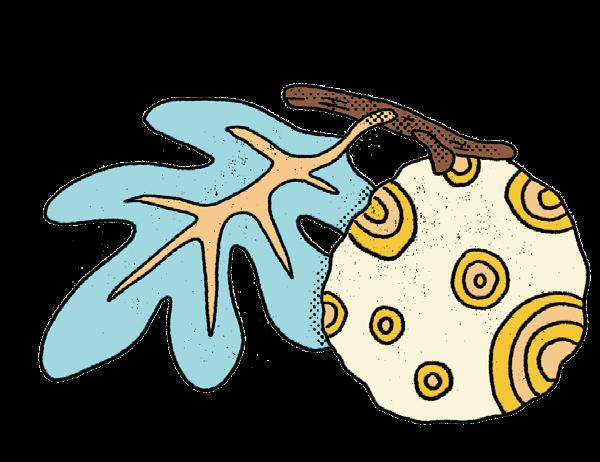
Pasifika communities, spanning the vast expanse of the Pacific Islands, have cultivated a profound connection with their land. At the core of this relationship lies a commitment to sustainable agricultural techniques that underpin their food security and serve as pillars of cultural identity. Among these techniques, taro cultivation, yam farming, and breadfruit cultivation stand out as time-honoured practices, deeply woven into the fabric of Pasifika life.

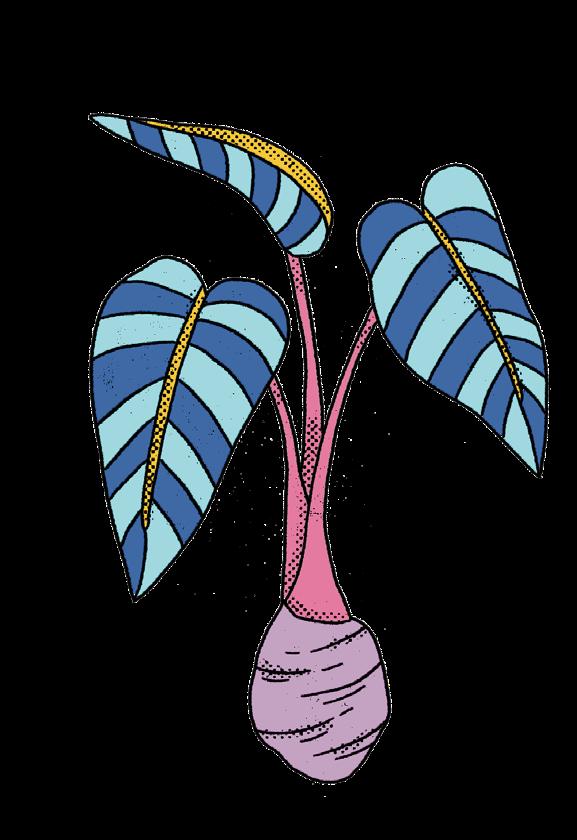
Taro, often referred to as the 'staple of life' in many Pasifika cultures, exemplifies their dedication to sustainable agriculture. Taro fields meticulously mimic natural ecosystems, utilising complex irrigation systems known as lo'i or 'taro terraces’. According to the University of Hawaii, lo’i irrigation systems are integral to traditional taro farming across numerous Pacific Island cultures. In Samoa, taro has a profound cultural significance, and features prominently in traditional ceremonies and rituals.
Yams, another dietary staple, are cultivated using sustainable methods that emphasise crop rotation and soil enrichment. According to UNESCO, different yam varieties are grown in a cyclical pattern to maintain soil fertility while preventing nutrient depletion. Pasifika farmers rely on traditional knowledge to determine optimal planting times based on lunar cycles, ensuring their yam harvests are successful. In Vanuatu, the annual Yam Festival showcases agricultural achievements and reinforces cultural bonds.
Resilient breadfruit trees are abundant in the Pacific Islands and play a critical role in food security. They provide sustainable sources of carbohydrates and essential nutrients with minimal maintenance, making them ideal for subsistence farming. These trees are interplanted with other crops to create biodiverse agroecosystems that improve soil health and reduce the risks of pests and diseases, aligning perfectly with Pasifika values of balance and harmony with nature. The cultural importance of breadfruit extends to cuisine and traditional ceremonies, and breadfruit dishes are cherished in Pasifika communities. The tree itself often holds a sacred status and its spiritual significance is woven into various cultural narratives.
In conclusion, traditional agricultural techniques in Pasifika communities exemplify the profound connection between culture, the environment, and food security. Taro cultivation, yam farming, and breadfruit cultivation not only provide sustenance, but also preserve cultural identities and strengthen communal bonds. These agricultural practices offer a reliable source of nourishment whilst reducing dependence on imports. Reducing this dependence is critical, given the challenges posed by climate change, including changing weather patterns and rising sea levels, which in turn affects agriculture and economic stability. The cultivation of taro, yams, and breadfruit stand as a testament to the resilience and resourcefulness of Pasifika communities as they nurture their traditions from the ground up, ensuring a sustainable and culturally rich future.
There’s a legend in Tahiti that is told like this:
One day, an awful famine hit our lush and bountiful Otaheite. Utari, a husband, father of two, and valued member of the community, fled to the valley, where he hunted for days to find food for his feti’i (whānau). After being gone for three days and three nights, he came back to his fare (whare) late at night with a pig he caught, but his tamari’i (tamariki) and vahine (wahine) were fast asleep. Overwhelmed with arofa (aroha), he looked up to the heavens and pleaded to the atua:
My time has come. May my body become food, and so may mine live.
When Utari’s vahine woke up the following day to a rā’au (rākau) growing in front of their fare, a voice called out saying:
Ta’u here (taku aroha), don’t be afraid, it’s me, Utari. I left you a pig; eat it. My tino (tinana) was transformed into a tree trunk, my âvae (waewae) and manimani
âvae (matimati) into roots, my rima (ringa) into branches, my manimani rima (matimati) into leaves, my upo’o (upoko) into ‘uru and my toto into sap.
Eat me and be nourished.
I was born on Ra’iātea, and after my birth, we went back home to Huahine. When we returned, my Mama buried my placenta underneath an ‘uru tree. I have nourished my fenua, spread my roots across the Pacific, and bore fruit for my people.
But I struggle to flourish when the soil has gone rotten. Soil contaminated with bubbling nuclear waste, soil that is not mine, soil that is stolen.
I

Stripped Ripped
Shipped from rich fenua and salty moana to sweet Caribbean water, Sold by and to menacing white grins and Wrapped in patriotic cloths of red, white, and blue. One thing Utari forgot: we, the ‘uru, must be nourished. Our soil, our water, our nutrients. I can not grow if you do not help me.
I humbly ask of you one thing: do not just CONSUME me!
Once fed, I will blossom with the loveliest ‘uru you could ever imagine.
Then, you can cook me in the ahima’a (hāngī), buried under coal and banana leaves, charred by fire.
Eat me and be nourished.
1 2 3 4

Words by
Dede Wedger (Fiji)

AE E TE LE’I TU’UA
Jay Emz and Ezy (Samoa)
Fakateretere

Josh Tatofi (Hawaii)
Tuvalu Song

Terikiai - Elia Boreham and Roia Lipine (Tuvalu)
Poi E
Pātea Māori Club (Aotearoa)
Pikinini Niu Ailan

Tonton Malele and Nene Morus feat. Jayrex Suisui (Papua New Guinea)
7 9
6 8 10 5
AU LE Junior Soqeta (Fiji)

Ramukanji
One Tox feat. Shefram Crew (Solomon Islands)
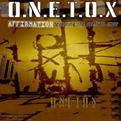


Heka Horcy
AP and Kamahumble (Tonga)
Aitutaki Paradise
Rex ATIRAI (Cook Islands)
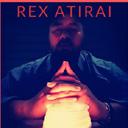
Words by Viliami Folau (he/him)
Having a hard day at uni? Needing something to pump things up, and find that motivation to finish your last assignment? Well, I guarantee you that this playlist will get you movin’ and groovin’ again tokos!
Fangai Lupe

Spawnbreezie
Sunshine Girl

J Boog feat.

Peetah Morgan
La’u Samoa (Drill remix) realizt

Aotearoa
Stan Walker

Sun Goes Down Nesian Mystik
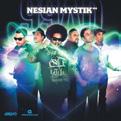
Siva Samoa 2K22

Wayno
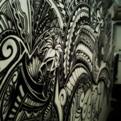
Let’s Do It Again
J Boog
Cool Down
Kolohe Kai Island Girls

Pati feat. Fiji and O-Shen
Tuvalu Song
Terikiai ‘Upē ‘O Siu'ilikutapu
Folau
Aunga Aoe
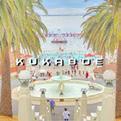
Taina Gee feat.
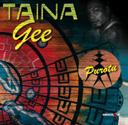
Sharzy and Karen
Iko Iko
Justin Wellington feat. Small Jam
Baby Why
Richard Parker feat.
Tony Alesana and Azzy
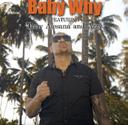

Unaloto Netane (Tongan Jam)

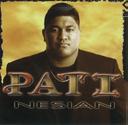
Bula baddies,
I am Jolénna, and I was one of the hosts of the Salient-produced podcast 20Somethings. Today, my mic is on mute as I present a brief insight into two podcasts you should be listening to.
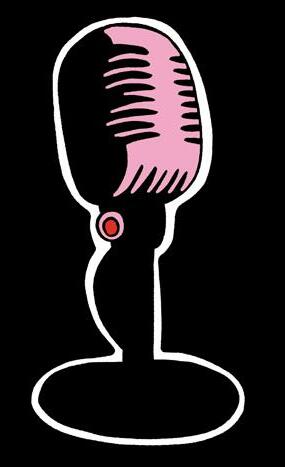
Our ancestors were amazing storytellers, so it's no surprise that the following podcasts are hosted by some young, beautiful,
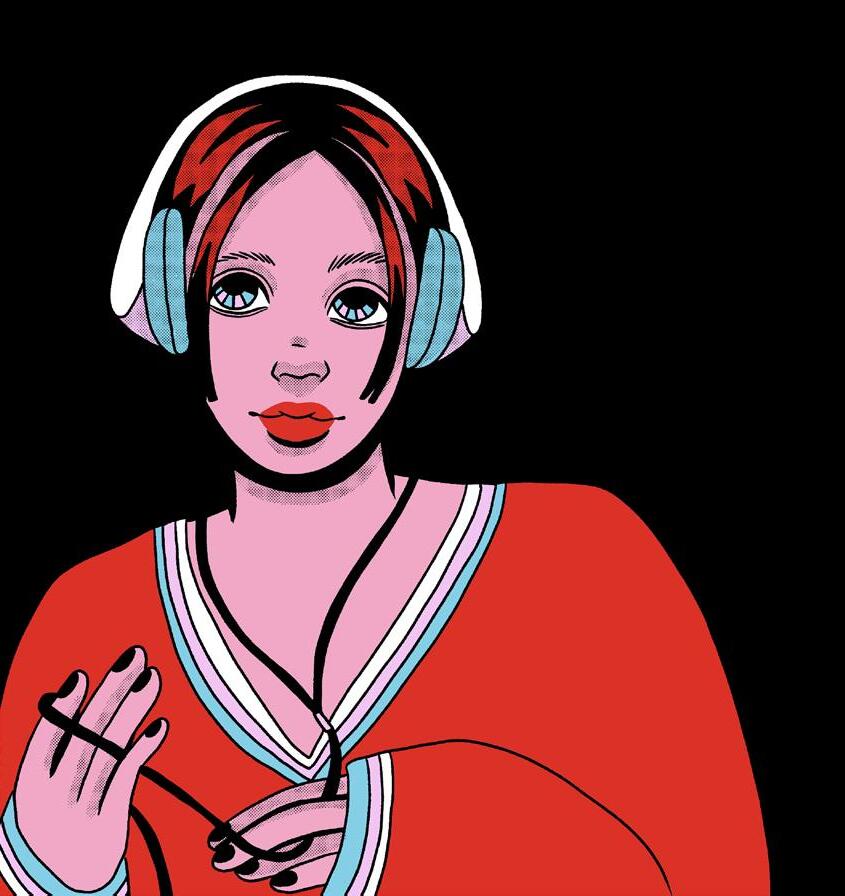
The first podcast recommendation will have you feeling like you're enjoying a talanoa session with some old mates. Island Roots, Auckland Ways is hosted by two proud South Aucklanders, Mariner Fagaiava (Samoan and Tongan descent) and Allyssa Verner-Pula (Samoan and Palagi). Their friendship blossomed in an Onehunga High School classroom where they found a shared appreciation for the iconic 2017 Fifth Harmony VMA performance. Their close relationship acts as a solid foundation for the podcast.
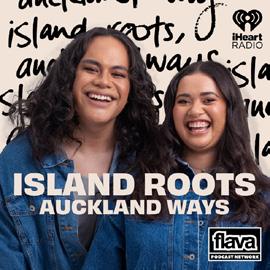
The premise of the show is about following these two 20-somethings through the trials and tribulations of being young, brown, and growing up in Tāmaki Makaurau. With special guests like Joe Daymond and Azura Lane, episodes are filled with advice and life stories that shed light on topics such as mental health and cultural identity, conversations I know I have had with my Pasifika and Māori friends alike. The two hosts navigate these topics while intertwining personal anecdotes, ultimately presenting a show that provides everything you'd want from a podcast and more.
and brown individuals. The four hosts of the recommended podcasts below have traded in the fue* for microphones and are bringing hyena laughs to all good listening platforms.
*A fue is a ceremonial whisk from Samoa. The fue is an item of regal importance for a Samoan tulafale (talking chief). They are carried by tulafale or high chiefs when they are acting as an orator and presenting lauga (ceremonial speeches).
The second podcast is Two Idiot Girls, hosted by Drew Afualo and Deison Afualo (both Samoan and Irish). Drew, known as the queen of shutting down incel, women-hating men on TikTok, is joined by her older sister as they, essentially, chat. Imagine if those two gossip-loving aunties in your family were given mics and a platform; it would sound something like this.

Although they are sisters, they acknowledge their varied experiences of growing up as Pasifika women. Deison, who went to high school in Oregon at a predominantly white institution (PWI), struggled with being one of the few brown girls, whereas Drew studied in Hawaii surrounded by people who looked and sounded like her. This is just one example of the stories they share on the show for listeners to relate to and have their own experiences validated.
Incorporating these voices and stories from the Pasifika community into the podcasting world not only enriches the medium but also helps foster understanding, connection, and empowerment for both Pasifika individuals and wider audiences. Through their unique perspectives and experiences, these podcasts play a crucial role in celebrating brown excellence while also simply giving us all a chance to have a laugh, and in this economy, we will take what we can get.

The earliest form of literature was said to be cuneiform scripts on clay tablets, created by ancient Mesopotamians in 3400 BC. Hundreds of years on, and literature has apparently become an integrated part of almost all cultures. Inevitably, literature has played a significant role in preserving the past, explaining the present, and predicting the future of human existence.
Efforts on literary art in the Pacific emerged between 1965 and 1968, with the support of both the University of Papua New Guinea and the University of the South Pacific. Otherwise, early Oceanian literature does exist, however, it was expressed through other art mediums.
Pacific Islanders have long used visual pictographs to communicate. They imprinted unique designs on their tapestries to indicate tribal affiliations.
During rituals and ceremonies, they etched calligraphically tatau onto their skin to indicate these initiations. And they also carved rocks and wood totems to exhibit mysteries of their spiritual realms.
Pacific literatures are very much oral and were transmitted down generations either through a talanoa with the elders or kastom stories (folklore) under the stars. Others were choreographed into prose, chants, lullabies, songs, and dance around evening fires.
These oratorical recollection of wars, plights, valor, genealogy, harvest, and seasons were like an unclassified curriculum that promoted values subjected to reciprocity, relationship, collectivism, resilience, service, respect, spirituality, leadership, family, and love; and the coexistence of mankind with the environment.
Over the last five decades, Pacific writers with the likes of Dr Konai Helu Thaman, Vincent Eri, Albert Wendt, Witi Ihimaera, Epeli Hau’ofa, Celestine Vaite, and Sia Figiel have engaged profoundly in this endeavor. The effort of the Solomon Islands Creative Writers Association (SICWA) is also part of this campaign in the Pacific. In July of this year, SICWA launched their second Talemoat II: Solomon Stories of Peace and Conflict. I was the editor.
Talemaot means to speak up. The book is a collection of perspectives and testimonies on the theme of peace and conflict. Through this process, ordinary Solomon Islanders were given the opportunity to come talk about their experiences and find healing from the misfortunes that had befell them during the Ethnic Tension (1998-2003) and the Honiara political riots of 2021.
While the production of Pacific literature is advancing well amongst both the Polynesia and Melanesia regions, there is more effort needed from Micronesia. Accounts of Oceania and their held perspectives can only be expressed well by Islanders themselves. Finally, our Pacific literature is key to allowing other cultures to experience our world and be able to appreciate our Pasifika worldviews. By nurturing our imaginations and creativity through our literature, we are only reinforcing a hopeful future for ourselves.
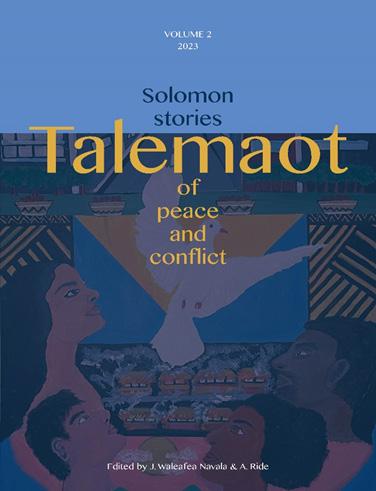
This piece is dedicated to a piece of my heart that I had to leave home; my community, my village, and my aiga.
We depart our islands, leaving behind the cradle of our existence. The Pacific, once a sanctuary of simplicity, now compels us to wander. Our souls tethered to the land, our hearts anchored in the embrace of azure waves, we bid farewell to the only home we've known.
The islands, like ancient sentinels, stood guard against the relentless tides of time. They nurtured us with the fruits of the earth and the secrets of the sea. But the world beckoned its siren song of progress and opportunity echoing in our ears.
With heavy hearts, we step onto foreign shores, leaving behind the whispers of coconut palms and the lullabies of ocean breezes. The Pacific's tranquil beauty, juxtaposed with its fierce challenges, has forged us into resilient souls.
As we navigate this new world, we carry the essence of our islands within us—the resilience of coral reefs weathering storms, the unity of communities bound by tradition, and the determination of people who know the value of what they leave behind.
The Pacific, with its simple splendors and profound complexities, remains etched in our memories. Its vivid sunsets, vibrant dances, and the laughter of children playing by the shore are indelible marks on our hearts. We may have left our islands, but they will never leave us. The Pacific is not just a place; it is the essence of who we are.
I see it clearly—you are going to get a large paycheck. You’ve quit your job and you’re owed that sweet holiday pay. Use your cash for a new tattoo, you’ve been wanting a lil frog guy for a while now. Alas, you shall regret the fresh ink.
Everyday, you understand your brain more than you did the day before (have you been doing some online diagnosing, cheeky?) and it’s making you waaay more attractive. We will all gravitate to your new and improved, self-assured nature.
I know everyone suffers from the end-of-year blues, but you’re suffering more than anyone. On top of your mountain of uni work, you’re being hit again and again by unexplainably expensive power bills, and unsurprisingly expensive medical bills.
What? Cancer wanting to change their major? Again? Oh, now who could’ve guessed? My love, do you ever plan on leaving this place? I shudder to imagine your student loan. I bet you do too and refuse to look at how much it actually is.
Ugh, your astrology this week is giving the same vibe as someone whose parents pay their rent. Gross. I don’t even want to talk to you (for all the Leo suns who were offended by this, that’s what you get for not reading for your rising sign).
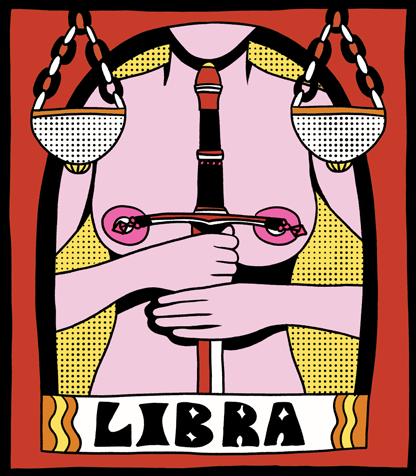
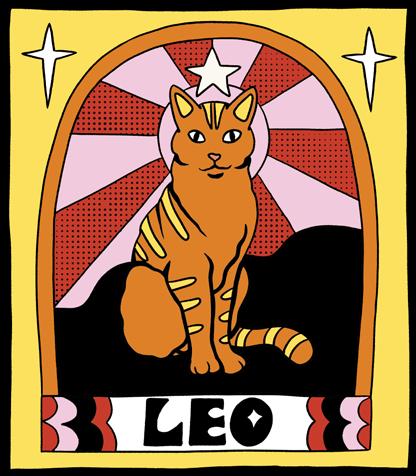
You’ve just found out how many 18-24 year olds aren’t enrolled to vote (36% I’ll have you know) and you’re entering your political advocacy era. Yes! Shout at the guy in your Comms tutorial who said that his vote wouldn’t matter!
Scorpio, are you missing someone? Have they gone away on a trip, or are they just busy and spending less time with you? Awww, how sweet! Scorpio does have feelings. You know, I was getting a little worried there for a second.
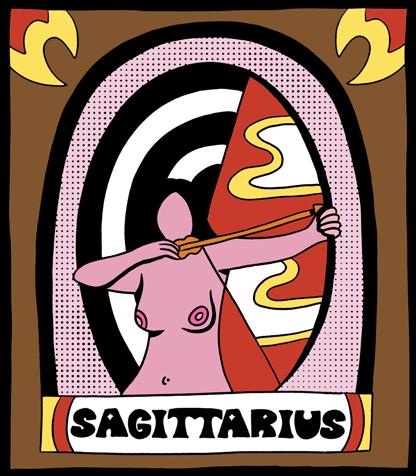
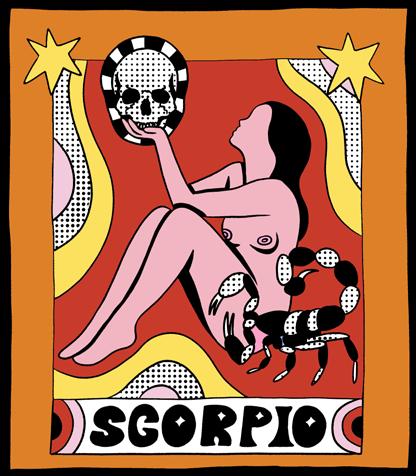

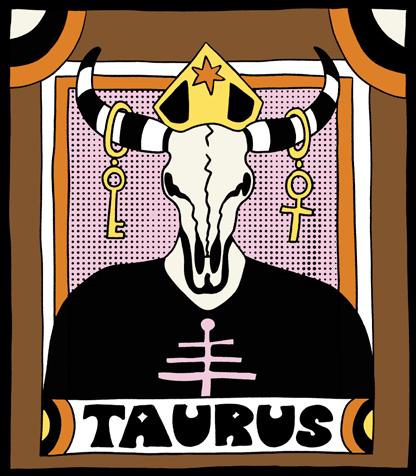

Since all your essays are written by ChatGPT, guess who's getting an AI-generated horoscope? *AHEM* Today, you might feel a little restless, itching to break out of your routine. This is a good day to take a break and indulge your adventurous spirit.

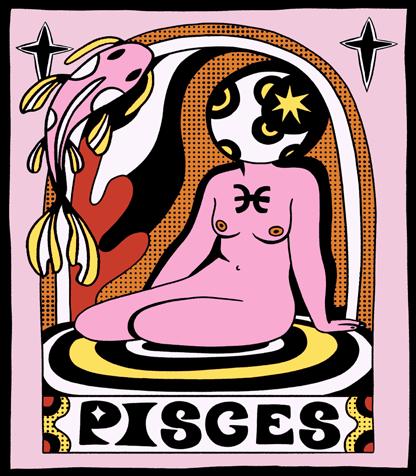


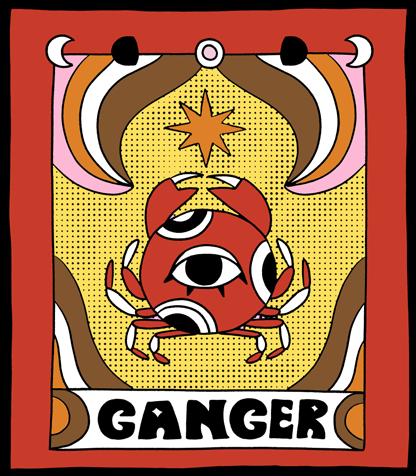
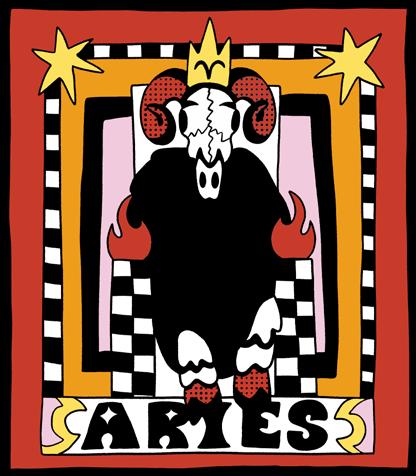
Uh-oh, we found the resident conspiracy theorist. Y'all always seem to crawl out near the general election. You’re as vocal as Virgo this week, but doing less honourable work I’d say.
You know, sometimes it’s okay to move back in with your parents. This full time study/work/flat thing is damn near impossible (I’m not entirely sure how the government and university expects us to do it).
Don’t spend all your money on pay day, dude. When will you learn? If you buy takeaways, you’re going to have to decline your friend's invitation to go out for a drink on the weekend and sheepishly admit you have $2.18 in your bank account.


WORD OF THE WEEK: COCONUT
NZ Sign Language
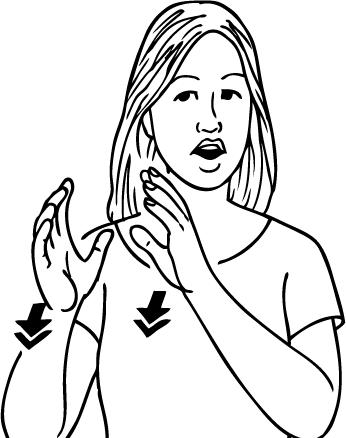


1. Spiritual idea that your actions in this life decide your fate in other lives (5)
4. Given name of ‘Stranger Things’ character Mayfield, and Dutch racing driver Verstappen (3)
6. Capital city of Ecuador (5)
9. (of a train) Service that only stops at major or limited stations (7)
10. Closest (7)
11. Water bear (10)
12. Sport played by Tiger Woods and Lydia Ko (4)
13. Top scholar of a class (3)
14. Substance primarily made up of nitrogen and oxygen (3)
15. Mother (3)
16. Present-making creature (3)
20. Unfeeling; anaesthetised (4)
21. Idea that what can go wrong, will go wrong (7,3)
23. Given name of Welsh actor Hopkins and the blue Wiggle (7)
24. Destructive wind vortex (7)
25. Underwear for your feet? (5)
26. Cacophony, racket, commotion (3)
27. Surname of American actor Chris, known for Captain America (5)
Find our crossword answers on our website or the Salient Linktree.

1. Compulsive thieves (13)
2. Given name of English actors Everett, Friend, Graves and Grint (6)
3. Alcoholic drink taken before dinner to stimulate appetite (8)
4. Great distress and unhappiness (6)
5. 1980 single by Olivia Newton-John and ELO, for the film of the same name (6)
6. Lambton, Customhouse and Jervois, for example (4)
7. Esky, chilly bin (6)
8. Phrase meaning clear of danger or difficulty (3,2,3,5)
12. Chewable substance that can be blown into bubbles (3)
13. Airport shop selling goods exempt from tax (4-4)
14. Long white vestment worn by some Christian ministers (3)
16. Substance that induces vomiting (6)
17. Kept afloat (6)
18. Slang for exactly (4-2)
19. Mammal often confused with the llama (6)
22. Swimming costume, bathers (4)


I gave my ex-boyfriend a handjob in the private call booth of the comp-sci lab in 2021. It was after hours, around 11 or so at night, it was discreet, accessible, but we still did have that “what if I get caught” thrill. I walked past the CompSci lab the other day, and the memory just flooded back to me. Good times they were, things were simple back then.



-Anonymous
HarlettDESIGNER

GUEST-EDITOR
CO-EDITOR
PODCAST
PODCAST
CHIEF REPORTER
SUB-EDITOR
POETRY EDITOR
EDITORIAL SUPPORT
SOCIAL
STAFF
STAFF
STAFF WRITER





Sesila Watkins (she/her)
Blake (cross/word)
Rebecca Soloi (she/her)

Jolénna Deo (she/her)
Vaetoeifaga Apelu (she/her)
Viliami Folau (he/him)
Jasmine Navala Waleafea (she/her)

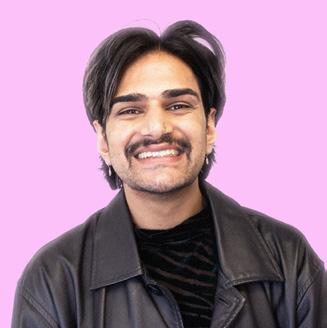
Mounga Vivili (she/her)
Tarifa Laban (she/her)
Upu S Lefauaitu (she/her)
Mauatua Fa’ara-Reynolds (she/they)
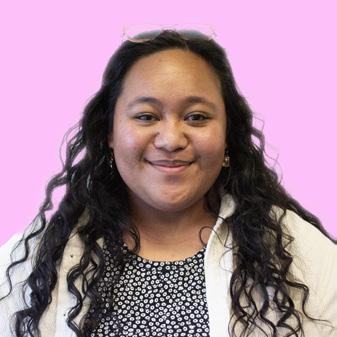
Grace Fakahau (she/her)


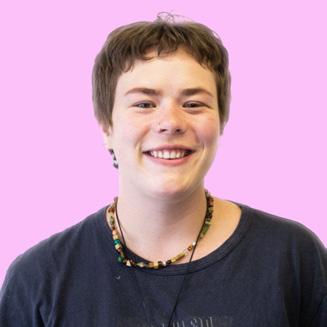


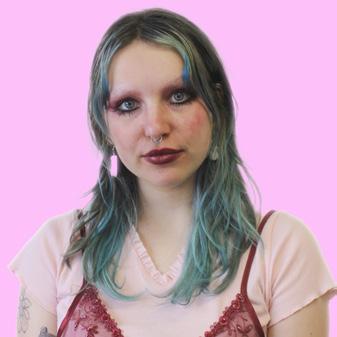

NEWS
Ethan

WRITING INTERN


Wesley Potogi (he/him) @creative_wezz
Francesca Pietkiewicz (she/they) CO-EDITOR Maia Ingoe (she/her) Bella Maresca (they/them) @cupids.kiss
